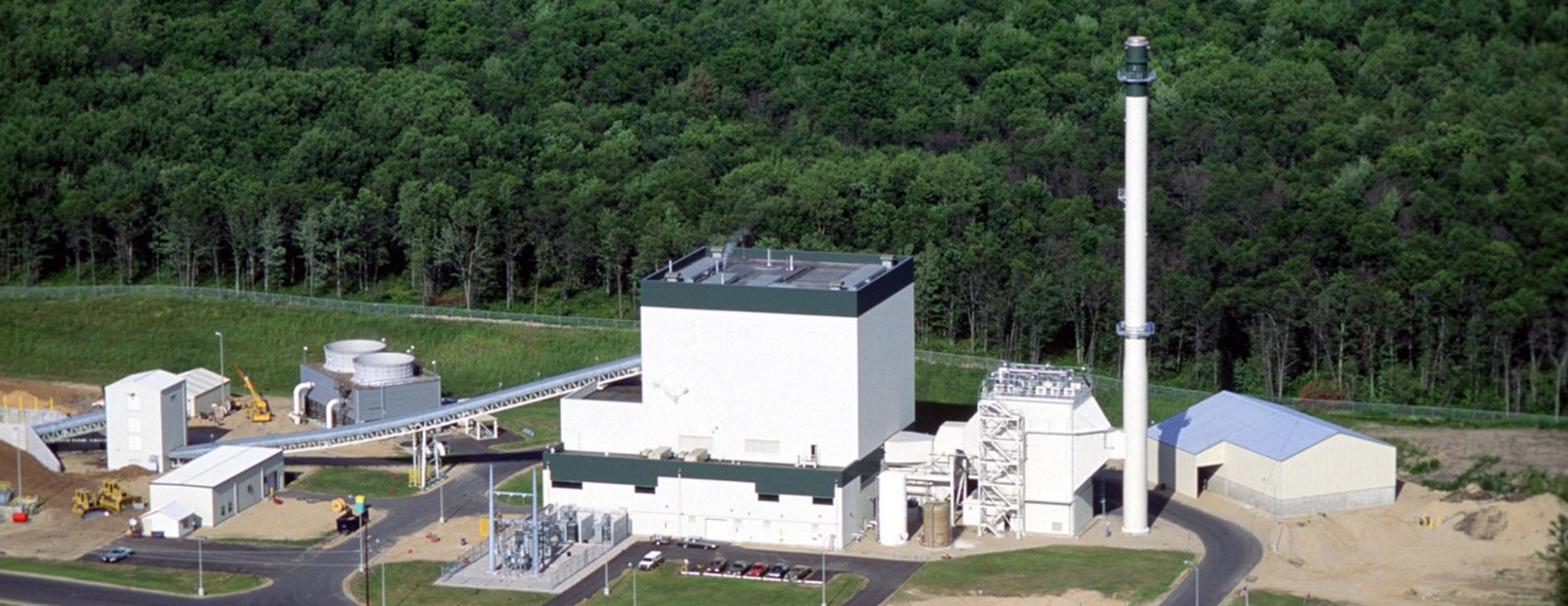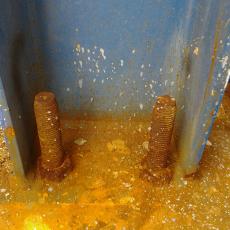Structural Steel
Anchors Away!
Contractors sometimes take an extraordinary short-term view of their obligations.
At one plant EPR evaluated the owner's engineer had agreed to waive the contract requirement that all embeds were to be hot dip galvanized. The back-story is that the contractor managed to get late on anchor bolt delivery and wanted to skip the delay associated with galvanizing. It is also worth noting that this location was in a polluted location, in a hot humid region, on the sea. This simply means corrosion concerns are very serious.
The photographs were taken before the first unit even reached first fire. Already, the anchor bolts exhibit heavy corrosion and loss of substrate material at the threads.
Within a couple years of COD, it is conservative to expect the anchor bolts to be essentially non-existent. It's not clear how the foundations and structure will resist uplift forces without compromise and risk to the structure.
The "fix" at that time was to add galvanized nuts on top of the previously un-galvanized nuts. Sort of...
Non-Critical Path time was saved. Minimal cost.
Repair is difficult. Cost of structural failure could be high if a material uplift condition occurs.
Mechanical Damage
In many developing country locations, a recurring problem is the mechanical damage to otherwise properly applied coatings due to handling abuse.
For most plants, structural steel is shop (off site) fabricated, loaded on trucks or ships, and delivered to the construction site for erection. This is an important process because it can become quite expensive and time consuming to field repair coatings. This can be even more true in locations with high humidity because a proper repair must be affected within the coating manufacturers indicated limitations. This is sometimes hard to achieve.
An owner should likewise be concerned because a repaired coating system is never as durable as the original coating. The first photo shows a typical "handling" problem. The subsequent photos show poor repairs and unrepaired damage. Both are so common, it seems normal.
One plant in Asia had structural steel and piping that was so abused with mechanical damage that the plant looked 15 years old even before COD.
Nothing. It costs nothing to handle coated pipe/steel carefully.
If all the repairs were affected, it would have cost several tens of millions of $.
Debris at Heights
At a new plant in the Middle East, EPR encountered an alarming amount of debris on steel members, gallery platforms, and other horizontal surfaces up to 150' in elevation from grade.
Power plants move, vibrate, and have operating transients where loads are imparted on the structures and equipment. Essentially, these items will eventually become falling debris with the obvious safety implications.
To further the concern some of the items are quite significant. Pieces of angle iron, bolts, nuts, wedges, grinding wheels, and a limitless amount of other items.
In this particular plant, EPR made the contractor clean up one unit. The debris collected filled a 10-yard dumpster. There were an additional 15 units in this very large plant.
Most contractors have a clean and close process, but in this instance and in others evaluated by EPR, no real effort was made by the contractors to present a finished product.
None.
Minimal, unless a serious safety incident occurs.










